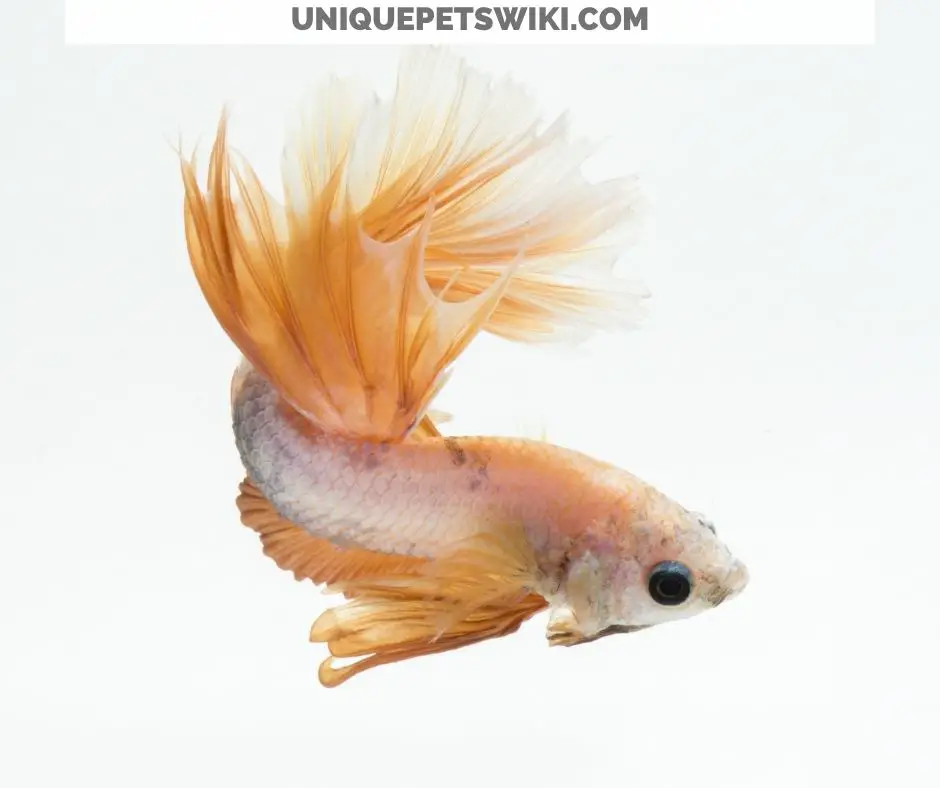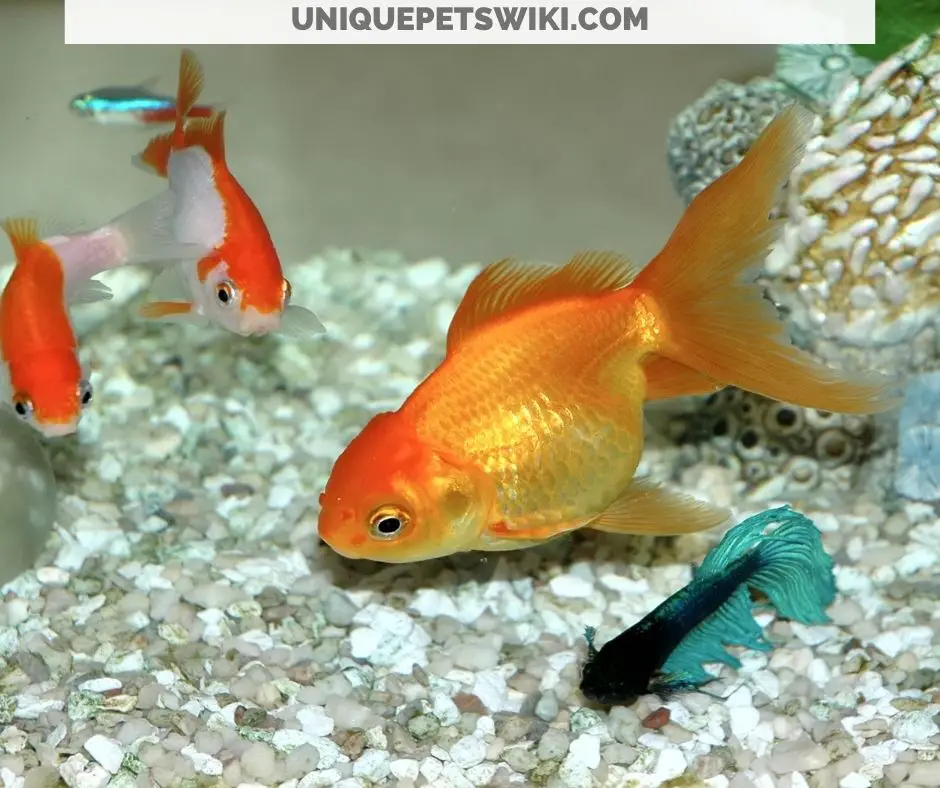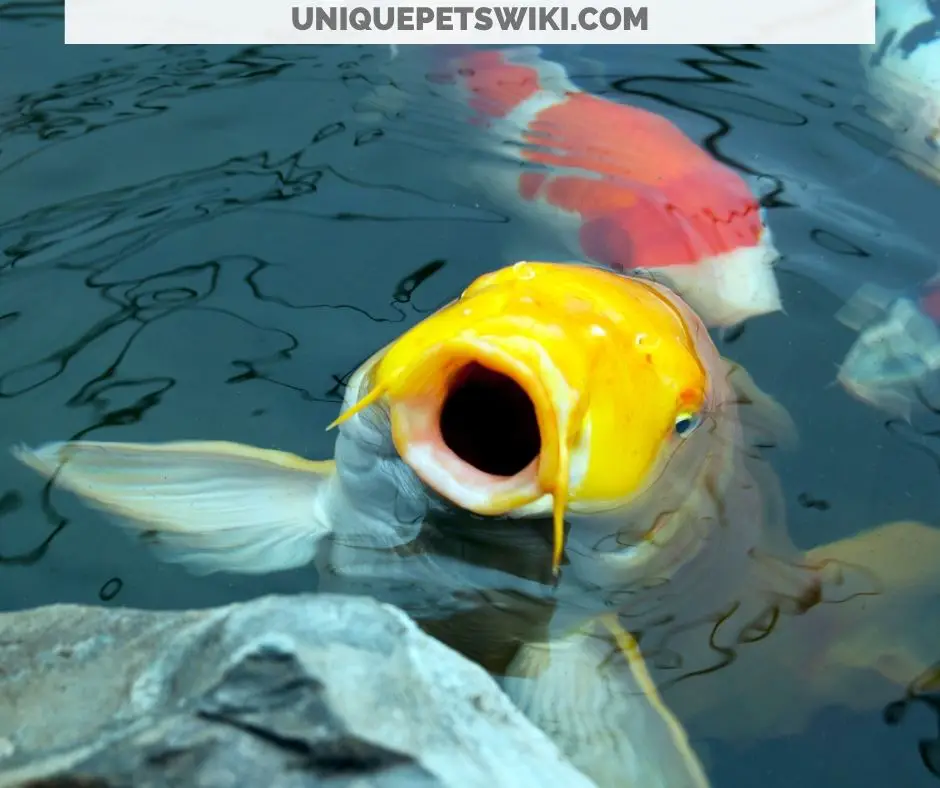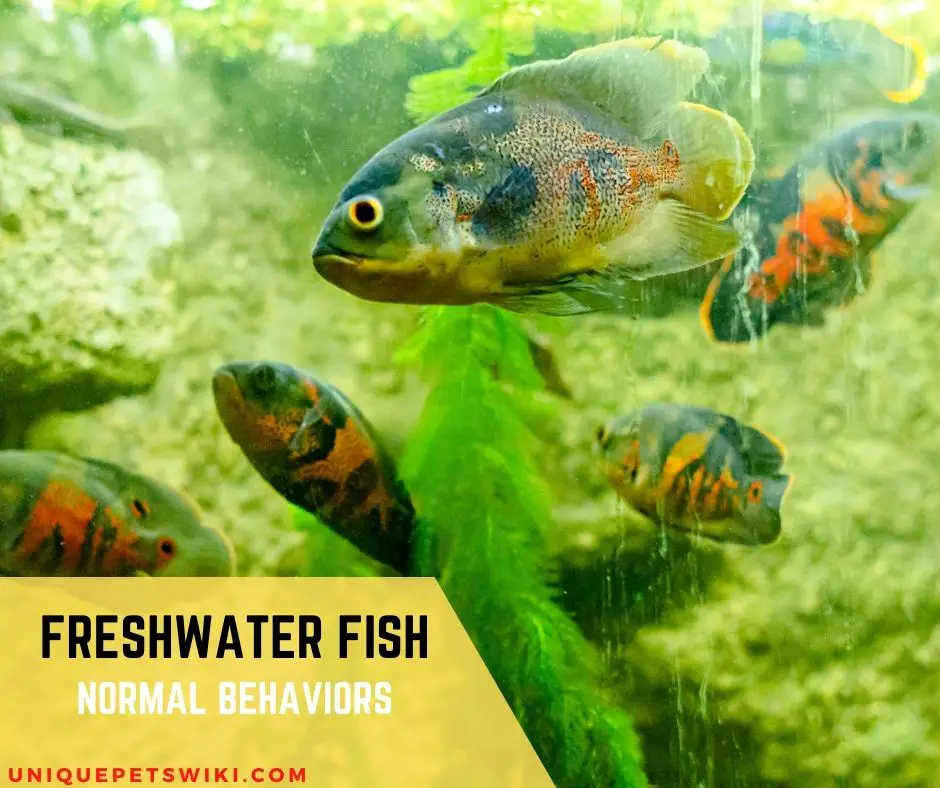What are the freshwater fish normal behaviors?
Fishes (both freshwater and saltwater) are unique pets that you can never understand unless you know them well. To properly care for and enjoy your aquarium, it is inevitable for you to understand their behavior fully.
Some behaviors are normal while others are not. It is difficult for an inexperienced aquarist to differentiate a normal behavior from a red-alerting one.
For this purpose, we came up with this article to help you understand freshwater fish’s normal behaviors.
Like Albert Einstein said, “Any fool can know. The point is to understand”. Read through this article to understand your freshwater fish’s normal behaviors.
Contents
- How to Tell Your Fish are Happy?
- 24 Freshwater Normal Behaviors
- Fighting
- Twisting Body
- Changing Color
- Fatter Rounded White Spots along the Gills
- Male Chasing the Female around the Tank
- Hiding
- Sitting At the Bottom Of The Tank
- Fish Playing Dead
- Sound
- Erratic Swimming
- Listlessness
- Gasping for Air
- Pre-Spawning Behavior
- Breeding Behavior
- Post-Spawning Behavior
- Freezing
- Counterattack Behavior
- Feeding Behavior
- Search Behavior
- Schooling Behavior
- Floating at the top of the tank upside down
- Nocturnal vs. Diurnal Behavior
- Fin Nipping
- Rearranging Tank Objects
- Wrapping Up
How to Tell Your Fish are Happy?
It’s easy to spot a healthy and happy freshwater fish from a sick one. They usually spend all their time eating, sleeping, and swimming near the bottom. On the contrary, the sick ones seem inactive and will exhibit odd behaviors like loss of appetite, difficulty swimming, rubbing against tank objects, Erratic/Fast Swimming and Hovering At the Top of the Tank.
Caring for human babies can be easy as they can easily show emotions. They cry when sad and smile when happy.
However, caring for animals can be challenging as they do not laugh or cry. It is even more challenging when you are an aquarist.
You can only watch fishes and determine if they are happy or sad. Therefore, it is critical to understand their behaviors to analyze their emotions.
These characteristics can tell when fishes are happy:
- Energetically swimming back and forth around the tank.
- Glowing skin
- Breathing normally
- Enjoy eating
- Roaming freely without fear
24 Freshwater Normal Behaviors
Freshwater fish spend most of their lives in freshwaters. Therefore, they either live in rivers or lakes where salinity is less than 1.05%.
Freshwater fishes require a range of physiological adaptations to survive in freshwater.
Examples of freshwater fishes include neon tetra, guppies, mollies, betta fish, goldfish, angelfish, golden dwarf barbs, rainbowfish, zebra danios, platies, etc.
Let’s see normal freshwater fishes’ behaviors.
Fighting
You may see your freshwater fish fighting. It can be red-alerting behavior but, if it’s a female and a male, they could be in the process of mating.
Before mating, a male and female fish engage in fighting. Therefore, fighting is a normal ritual for mating fishes.
However, you should ensure that none of the fighting fish is injured.
Twisting Body

Male freshwater fish such Betta flares its gills, spread fins, and twist its body when it’s interested in a female.
Therefore, twisting the body in males is a mating behavior that you could observe in some freshwater fishes.
Changing Color
Your fish turning darker can be alarming. However, if it is a female, you should not get overly worried.
Female betta fish turn darker if they are interested in mating. Additionally, they curve their body back and forth.
Also, the female spends most of their time near a bubble nest when it’s ready to mate.
Fatter Rounded White Spots along the Gills
Goldfishes are also freshwater fishes. During mating, the female and the male’s white spots along gills become fatter and rounded.
Therefore, you should not be alarmed by this kind of physical change among goldfishes especially, if they are at the right age of mating.
Male Chasing the Female around the Tank
When it’s time for mating, male goldfish chase the female around the tank until the female is completely wasted.
When the female can’t run anymore, it releases the eggs, and the male, in return, releases its milt to fertilize the eggs.
Therefore, the chase is a normal behavior in goldfishes that encourage the females to release their eggs.
Hiding
New fish tend to hide when you introduce them to a new terrarium. Therefore, hiding is protective behavior in fishes.
The fish will stop hiding once it gets familiar with its environment. You should, therefore, be patient with new fishes and give them time to assimilate.
Sitting At the Bottom Of The Tank

Some species spend most of their time at the bottom of the tank eating, sleeping, and swimming.
It is normal behavior for most fish species. However, if the habit is sudden, it can signify illness such as a swim bladder infection.
Therefore, it is necessary to understand your fish’s normal behavior to know when they are sick.
Fish Playing Dead
Some species play dead to fool other fishes. However, in some species, it is a red-alerting behavior that may require immediate action.
For instance, in goldfishes, this behavior is not normal as it can be a sign of dropsy or digestive issues.
The goldfish float at the top of the tank upside down.
Sound
Some male species produce sounds to entice females during mating—for instance, freshwater drummer fish grunt and rumble to entice females.
Therefore, a rumbling and a grunting sound is a normal mating behavior in drummer fish.
Erratic Swimming
Erratic swimming is commonly associated with illnesses such as the swim bladder. However, in some cases, erratic swimming can mean that your fish is exercising.
Erratic swimming can also be a sign of poor water conditions. Therefore, unless the swim is regular and happens initially, you should not ignore the sign.
Listlessness
It is common for freshwater fishes to appear lethargic and tired sometimes. It can be due to improper temperature, overfeeding, or improper water quality.
Therefore, if your fish seems listless, you should observe all three factors and adjust where necessary.
Gasping for Air

If you happen to see your fish gasping for air at the top of their tank, you should check the water quality ASAP.
Also, insufficient oxygen in your fish’s terrarium can cause them to gasp for air at the top of their tank.
Therefore, testing the water and using an aerator can go a long way in solving this problem.
A fish that is gasping for air will breath with its mouth wide open and will swim to the surface of the water as though wants to escape. This usually happens when there is insufficient oxygen in the water. It is not a nor mal behavior, hence you need to take an action immediately to save your pet.
Pre-Spawning Behavior
Pre-spawning is a courtship behavior in some fish species. It may include the males building a nest and protecting their territories.
On the other hand, the females produce a pheromone to attract and excite the males.
Breeding Behavior
It can involve a male and a female spawning together for days or weeks. During this time, the female releases a few eggs at a time.
Post-Spawning Behavior
It involves the temporary couple breaking up with neither protecting the eggs. In other species, female or male fish may guard the eggs until they hatch.
Freezing
Freezing is protective behavior in some fish species. It involves a fish remaining motionless at the bottom corners.
Fish behave this way when they feel threatened. The behavior may be more common when you introduce a fish to a new habitat.
Counterattack Behavior
Counterattack behavior is protective behavior among some freshwater species. It involves the fish trying to counterattack the predator.
Before mixing different species of freshwater fishes, you should ensure they are compatible to prevent territorial fights.
Feeding Behavior
Feeding behavior involves the fish using a chemical signal in food identification and other senses to locate the food.
Some fish may taste the food fast to determine if it’s edible, while others may use taste and texture.
Search Behavior
When searching for food, fishes may require to swim fast and erratically. Once they find the food, the fish may decrease the swimming speed.
The success rate of capturing food depends on how fast a fish can swim. Therefore, you may encounter your freshwater fishes speeding out while competing for food.
Schooling Behavior
Schooling behavior is a protective behavior among some fish species. It involves many fishes swimming together to act as a single organism.
The group of fishes must be of the same size. Big or small size fishes break from the group and form their own.
Floating at the top of the tank upside down

Fishes with digestive issues may float at the top of the tank upside down. This problem occurs when the fish swallows excessive air when swimming at the top in search of food.
You can prevent this problem by offering your fish food at the bottom of the tank.
Nocturnal vs. Diurnal Behavior
Some fish species are active at night while others at night. Thus, it is critical to understand your type of fish to prevent causing them stress.
Diurnal species will remain active during the day while nocturnal at night.
Therefore, it is necessary to provide enough hiding places for nocturnal fishes as they remain hidden during the day.
Fin Nipping
Fin-nipping can be a normal behavior among certain species of fish. However, some species can get serious consequences from continuous nipping.
Therefore, it is critical to ensure that you don’t mix long-finned species with fin-nipping fishes as they may become victims.
Long-finned species include betta fish and angelfish. Repeated fin-nipping can cause fin rot.
Rearranging Tank Objects
Bottom feeder fish species tend to dig and rearrange objects in their tank. It is normal behavior, especially for loaches.
It is a way for them to search for food and thus should not worry you. However, you should ensure that there are no sharp objects that can injure your digging fish.
Also, sudden digging behavior can be a sign of stress that you should investigate immediately.
Wrapping Up
Learning about fish behavior is fascinating and practical for any fish hobbyist. It is the only way for fish lovers to experience diverse knowledge about their pets.
Thus, leading to greater success in breeding and keeping them. It is necessary to observe your fishes and understand their normal behaviors.
It will help you know when they suddenly change their behavior due to stress or sickness.
We have discussed the 24 freshwater fishes behaviors above. However, these behaviors are not final.
With close observations and research, you can discover many more behaviors in your fishes.
